The Ampere Altra Review: 2x 80 Cores Arm Server Performance Monster
by Andrei Frumusanu on December 18, 2020 6:00 AM EST- Posted in
- Servers
- Neoverse N1
- Ampere
- Altra
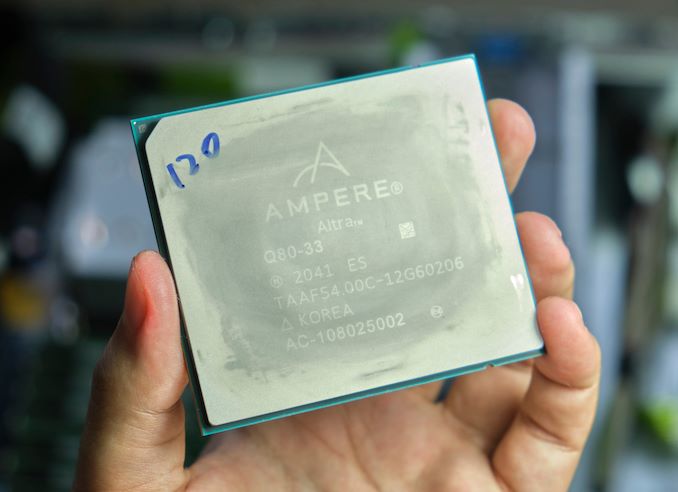
As we’re wrapping up 2020, one last large review item for the year is Ampere’s long promised new Altra Arm server processor. This year has indeed been the year where Arm servers have had a breakthrough; Arm’s new Neoverse-N1 CPU core had been the IP designer’s first true dedicated server core, promising focused performance and efficiency for the datacentre.
Earlier in the year we had the chance to test out the first Neoverse-N1 silicon in the form of Amazon’s Graviton2 inside of AWS EC2 cloud compute offering. The Graviton2 seemed like a very impressive design, but was rather conservative in its goals, and it’s also a piece of hardware that the general public cannot access outside of Amazon’s own cloud services.
Ampere Computing, founded in 2017 by former Intel president Renée James, built upon initial IP and design talent of AppliedMicro’s X-Gene CPUs, and with Arm Holdings becoming an investor in 2019, is at this moment in time the sole “true” merchant silicon vendor designing and offering up Neoverse-N1 server designs.
To date, the company has had a few products out in the form of the eMAG chips, but with rather disappointing performance figures - understandable given that those were essentially legacy products based on the old X-Gene microarchitecture.
Ampere’s new Altra product line, on the other hand is the culmination of several years of work and close collaboration with Arm – and the company first “true” product which can be viewed as Ampere pedigree.
Today, with hardware in hand, we’re finally taking a look at the very first publicly available high-performance Neoverse based Arm server hardware, designed for nothing less than maximum achievable performance, aiming to battle the best designs from Intel and AMD.
Mount Jade Server with Altra Quicksilver
Ampere has supplied us with the company’s server reference design, dubbed “Mount Jade”, a 2-socket 2U rack unit sever. The server came supplied with two Altra Q80-33 processors, Ampere’s top-of-the-line SKU with each featuring 80 cores running at up to 3.3GHz, with TDP reaching up to 250W per socket.
The server was designed with close collaboration with Wiwynn for this dual socket, and with GIGABYTE for the single socket variant, as previously hinted by the two company’s announcements of leading hyperscale deployments of the Altra platforms. The Ampere-branded Mount Jade DVT reference motherboard comes in a typical server blue colour scheme and features 2 sockets with up to 16 DIMM slots per socket, reaching up to 4TB DRAM capacity per socket, although our review unit came equipped with 256GB per socket across 8 DIMMs to fully populate the chip’s 8-channel memory controllers.
This is also our first look at Ampere’s first-generation socket design. The company doesn’t really market any particular name to the socket, but it’s a massive LGA4926 socket with a pin-count in excess of any other commercial server socket from AMD or Intel. The holding mechanism is somewhat similar to that of AMD’s SP3 system, with a holding mechanism tensioned by a 5-point screw system.
The chip itself is absolutely humongous and amongst the current publicly available processors is the biggest in the industry, out-sizing AMD’s SP3 form-factor packaging, coming in at around 77 x 66.8mm – about the same length but considerably wider than AMD’s counterparts.
Although it’s a massive chip with a huge IHS, the Mount Jade server surprised me with its cooling solution as the included 250W type cooler only made contact with about 1/4th the surface area of the heat spreader.
Ampere here doesn’t have a recessed “lip” around the IHS for the mounting bracket to hold onto the chip like on AMD or Intel systems, so the actual IHS surface is actually recessed in relation to the bracket which means you cannot have a flat surface cooler design across the whole of the chip surface.
Instead, the included 250W design cooler uses a huge vapour chamber design with a “pedestal” to make contact with the chip. Ampere explains that they’ve experimented with different designs and found that a smaller area pedestal actually worked better for heat dissipation – siphoning heat off from the actual chip die which is notably smaller than the IHS and chip package.
The cooler design is quite complex, with vertical fin stacks dissipating heat directly off the vapour chamber, with additional large horizontal fins dissipating heat from 6 U-shaped heat pipes that draw heat from the vapour chamber. It’s definitely a more complex and high-end design than what we’re used to in server coolers.
Although the Mount Jade server is definitely a very interesting piece of hardware, our focus today lies around the actual new Altra processors themselves, so let’s dive into the new Q80-33 80-core chip next.


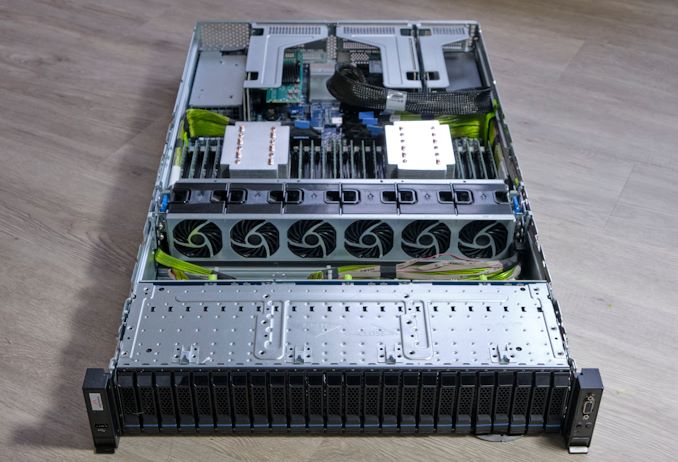
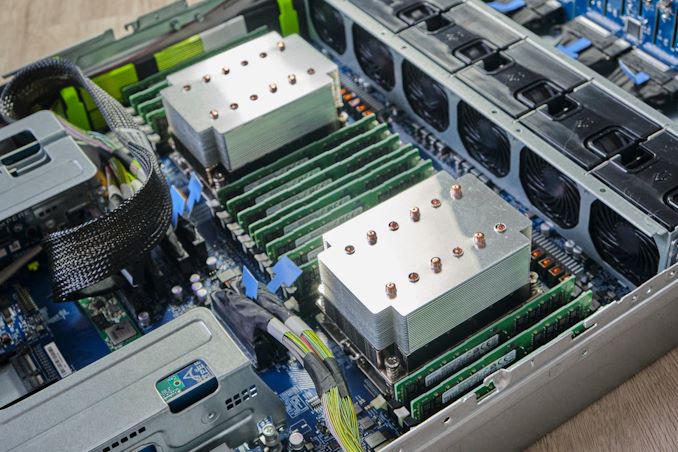
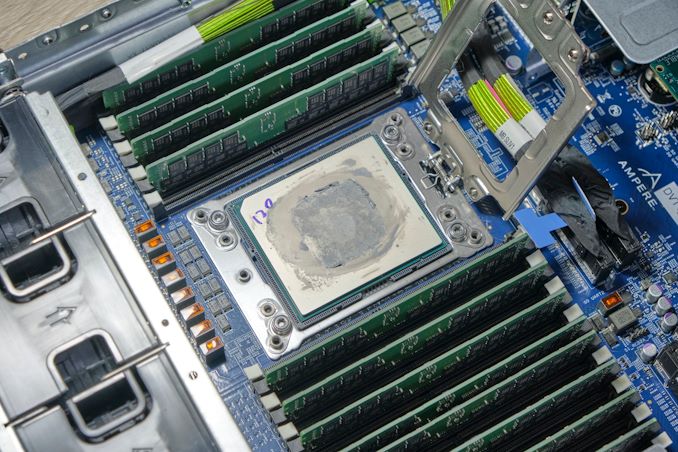
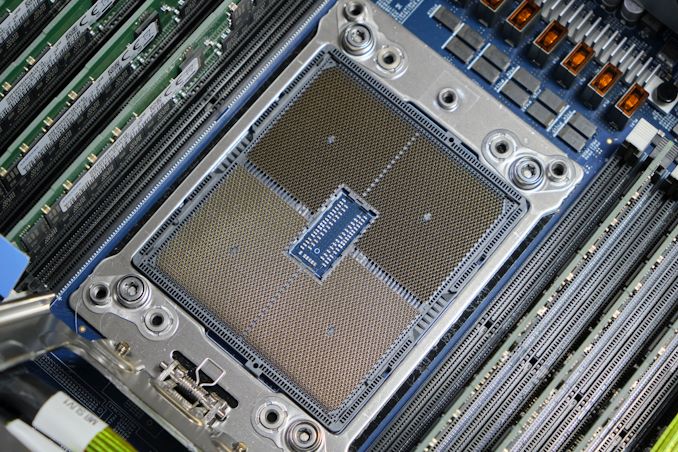
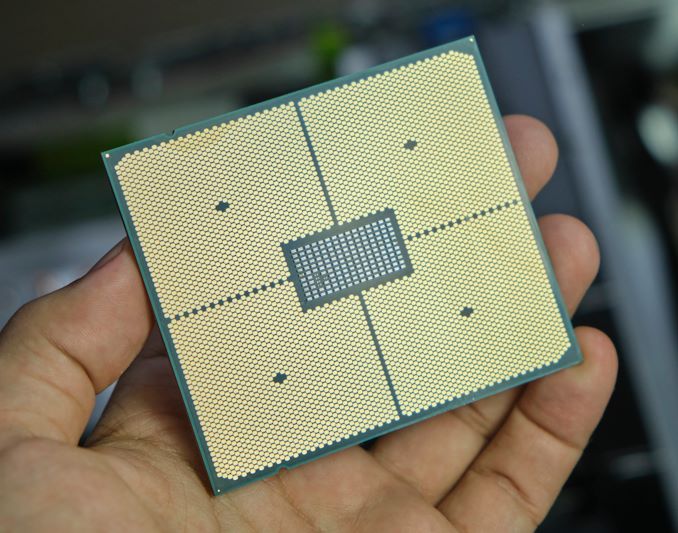

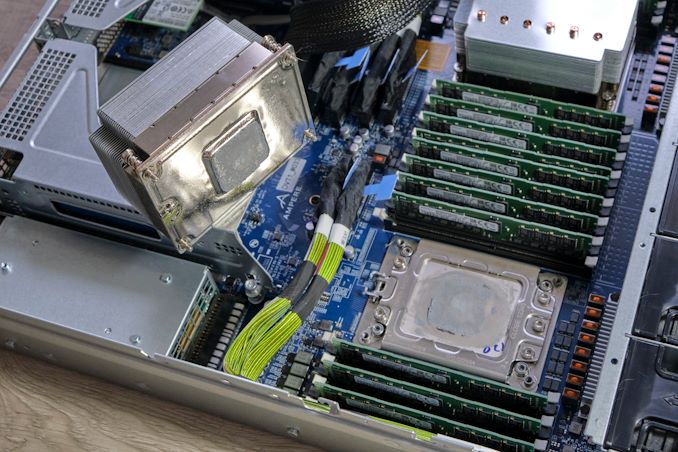
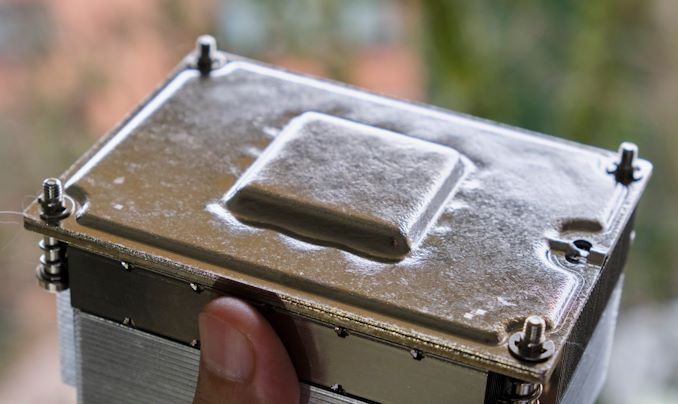
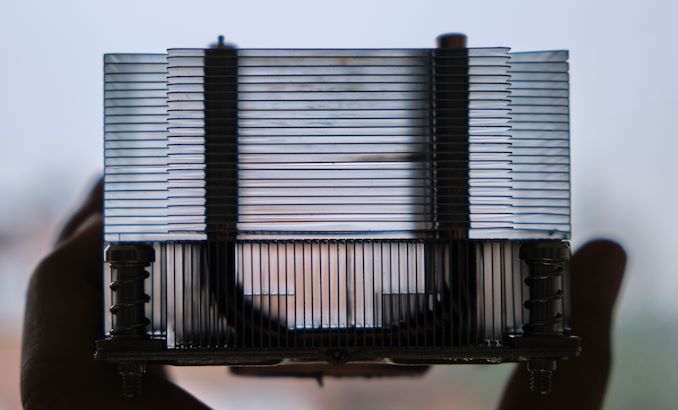








148 Comments
View All Comments
SarahKerrigan - Friday, December 18, 2020 - link
Looks like the LLVM compile time graph has "Quadrant" twice when one of the graph labels should be "Monolithic."Andrei Frumusanu - Friday, December 18, 2020 - link
No, that's correct. Both 1S and 2S figures were run in quadrant modes.SarahKerrigan - Friday, December 18, 2020 - link
You're absolutely right - I'm apparently illiterate and ignored the socket count.cbm80 - Friday, December 18, 2020 - link
Says "KOREA"...so made by Samsung?jeremyshaw - Friday, December 18, 2020 - link
probably just packaging.danbob999 - Friday, December 18, 2020 - link
Does the price of the CPU matters at this point? It's not as if you are going to build your own system isn't it? Isn't buying the whole computer the only option? Do they sell motherboards as well?Spunjji - Monday, December 21, 2020 - link
People like to talk about how RAM costs rapidly sink the cost of the CPU *as a proportion of total cost*, which is true, but saving $2000 per socket still adds up when you're buying a fair few of them. Saving hundreds of thousands of dollars on a datacentre build-out (and with no significant performance downsides) is good financial sense, even if you're still spending millions overall.kepstin - Friday, December 18, 2020 - link
I really want to see what would happen if an M1-based design got scaled down to something suitable for a workstation.I think something like that is needed in order to solve problems like what you were running into with Blender - until we have decent high performance aarch64 workstations on developer's desks, x86-64 is gonna be ahead on software support.
jeremyshaw - Friday, December 18, 2020 - link
Yeah, I guess we all have to just wait for Apple.*technically* Nvidia did and does sell Jetson boards in that range (they even delivered the first consumer accessible PCIe 4.0 root, in the AGX Xavier), but Nvidia's insistence on locking everything down to an ancient kernel basically kills any hope of it being used outside of specific fields. Even something as simple as their teams keeping up with LTS releases would be somewhat viable, but nope. Even Raspberry Pi foundation is far ahead of them, now.
I think they are still trying to upgrade their bootloader to allow booting from NVMe cards? At least their AGX Xavier is finally picking up beta UEFI support (which should help somewhat).
I guess they would rather Apple eat their lunch. Oh, well.
mode_13h - Sunday, December 20, 2020 - link
Nvidia is selling those for robotics and stuff. Apple is not trying to eat that lunch.